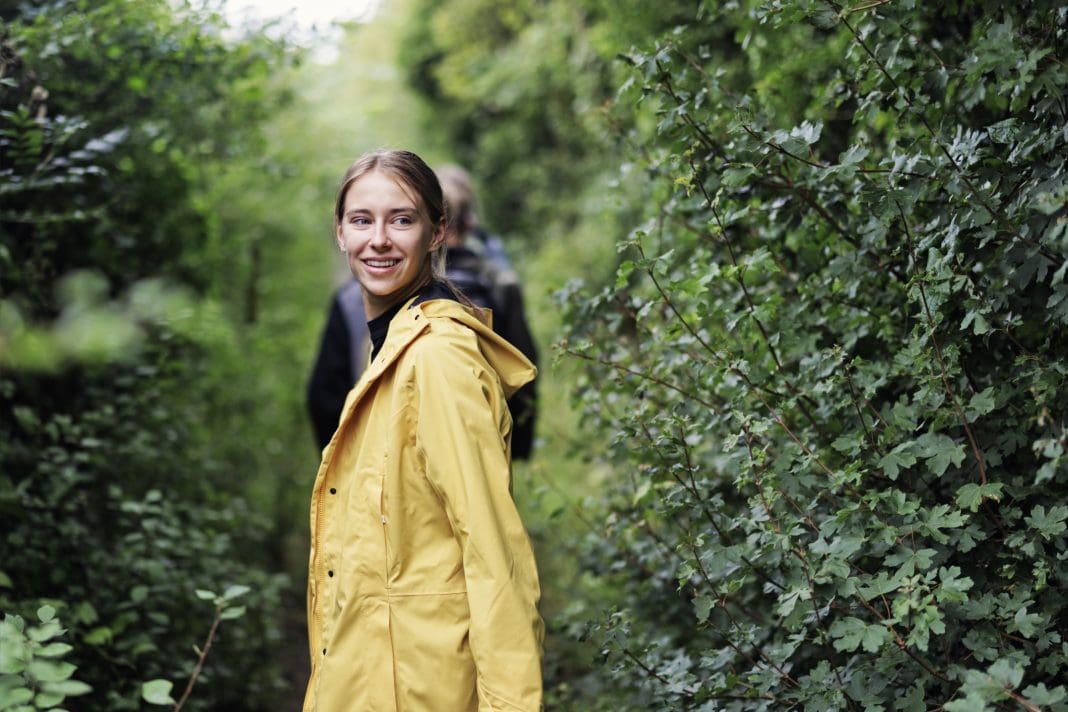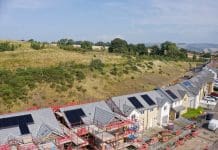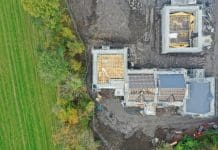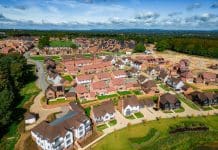Stephenson Halliday landscape manager David Walker believes education and engagement on natural landscape processes is the key to challenging the shifting baseline on planning and public acceptance of ‘messier landscapes’
Many people today associate time spent within our heavily managed countryside as ‘being at one with nature’. But as academic, historian and ecologist Oliver Rackham (1986) rightly recognised: ‘… the rural landscape, no less than Trafalgar Square, is merely the result of human design and ambition’.
Simply, human endeavour has transformed natural areas for our own gain through various types of land management, whether for food, fuel, forestry or other development. As a result, the sense of naturalness has eroded significantly over a relatively short period of time. A walk in the countryside for some may feel like an experience of nature, but the reality is often quite different.
However, links are increasingly being made between how we use land and existential issues such as the crises of nature, climate and public health. The notion of ‘making space for nature’ is ever more a mainstream view as people associate this with the potential to mitigate the impacts of climate change and biodiversity loss.
Current demands on the British countryside are balanced with rewilding and regenerative approaches
The importance of increasing self-sufficiency in terms of food production in Britain is, of course, also widely acknowledged. However, in addition to this the idea of farming productively and profitably in a way that supports nature recovery and enhanced biodiversity through regenerative agriculture approaches is becoming more prevalent. And landscape architects are increasingly working on schemes that look to use nature-based solutions and rewilding to overcome age-old problems, re-naturalising areas that were previously managed more intensively.
Yet the accumulation of wilding schemes, both big and small-scale, could, for some, fundamentally change, what is commonly recognised as quintessential British countryside. The association made with the traditional British rural landscape as a source of moral, political and indeed aesthetic value, would perhaps be vulnerable to what some may perceive as radical change through re-naturalisation. Even in urban settings, the debate around tidy and messy landscapes persists; relaxing verge mowing regimes to save on resource and boost biodiversity is met with resistance, and alternatives to chemical weed control to keep pavements completely vegetation free, remains controversial.
In rural settings, these debates around nature versus food production can seem relatively open-and-shut, but often these debates are also strongly influenced by aesthetics. How does ‘making space for nature’ affect rural or semi-rural landscapes in terms of their aesthetics, perceived character, and the way they are experienced by people? Are messier landscapes being, or going to be, viewed as a threat to quintessential British rurality? And is the line where nature stops and human activity begins, blurred?
The current ‘shifting baseline’ overlooks the benefits of a messier landscape
Successive generations have grown up with a familiar, communal association of our present countryside as the conventional landscape of Britain and which they perceive has always been this way. Perhaps ‘shifting baseline syndrome’ has prevailed and played a part in this link. As the pace of change is often so slow, each new generation’s perception of the countryside, including its condition and how it looks because of the way it is managed, is considered ‘normal’.
As a result, the ongoing consensus has been to manage, control and tame the mess of overgrown, unmown, unstructured vegetation, clear away dead wood and drain boggy land. But as more is understood about the value these bring, it may be that we are reaching a new balance where the vision of rougher, messier landscapes is more understood for what they contribute, rather than something that needs to be tidied.
Education in this area and effective community engagement is fundamental to breaking the cycle, challenging the shifting baseline. During stakeholders and community engagement events, landscape consultants are seeing increasing public interest and support in re-naturalising the landscape. A better understanding of how the British countryside appeared and functioned over past centuries is, in our experience, helping people see the benefits of these schemes, without the need to rigorously justify them.
Messier landscapes may offer communities better protections against extreme weather, such as flooding
We recently worked on a brief to reimagine Bersted Brooks and Bersted Park in West Sussex, both set on the floodplain of the Aldingbourne Rife. The areas suffer significant flooding issues for large parts of the year, making many areas completely inaccessible. Nature-based solutions such as wetland creation and re-naturalising parts of the river system were proposed as a means to keep certain parts of the site drier for longer, whilst enhancing biodiversity and supporting habitat creation.
Our team worked closely with a range of local stakeholders, supported community consultation, and presented the concept masterplan directly to councillors. At engagement events and when presenting to committee, one of the key points of discussion that chimed was the original function of landscape, with keen interest on why the land flooded and how the reintroduction of natural processes could play a key role in mitigating these impacts, and those of climate change more broadly. We found there was support for ‘messier’ landscapes.
Political discourse must support a broader understanding of biodiversity
Britain has sadly become one of the most nature-depleted countries in the world. And despite this, the recent general election saw major parties remaining alarmingly silent on environmental issues such as the nature crisis.
But this may change, with public opinion that appears to be shifting. In our experience it feels there is more and more acceptance, and even growing enthusiasm for wilder landscapes. There will still be some who value the archetype, who resist departure from the ‘traditional’, neat rural scene.
Over time though we could see the shifting baseline reset and new balances struck as society at large gains more understanding and appreciation of the ‘messier’ landscape aesthetic.








![[VIDEO] Local planning inspector recruitment to begin in earnest in new year A drive to recruit local planning inspectors will begin in the new year](https://www.pbctoday.co.uk/news/wp-content/uploads/2025/12/iStock-2159482095-2-218x150.jpg)

![[VIDEO]Government launches new online appeal service for local planning authorities Group of young coworkers using computers in their group office, representing the new online appeals service](https://www.pbctoday.co.uk/news/wp-content/uploads/2025/12/iStock-2191280160-218x150.jpg)



